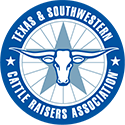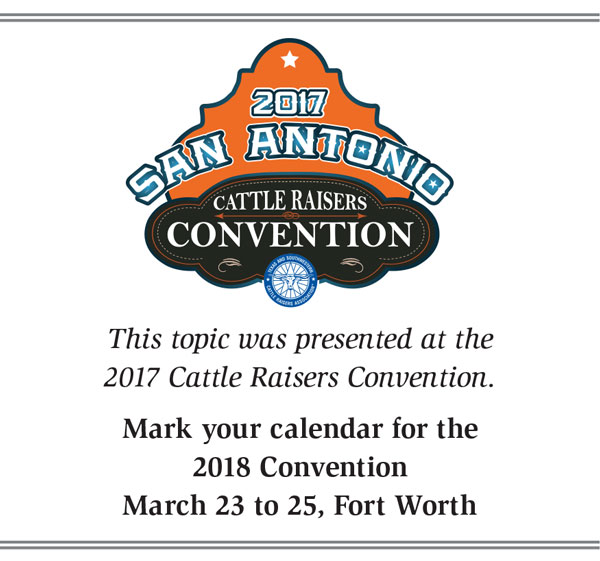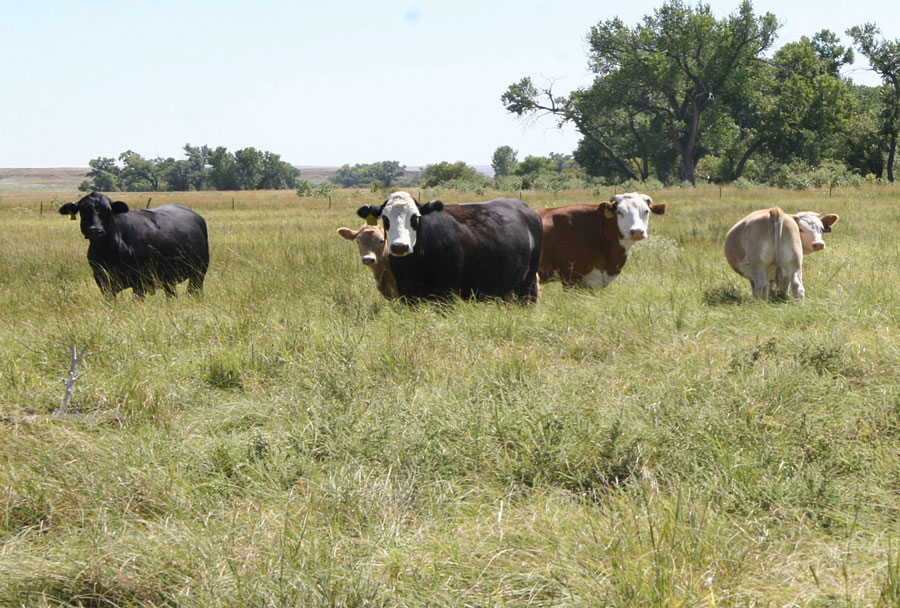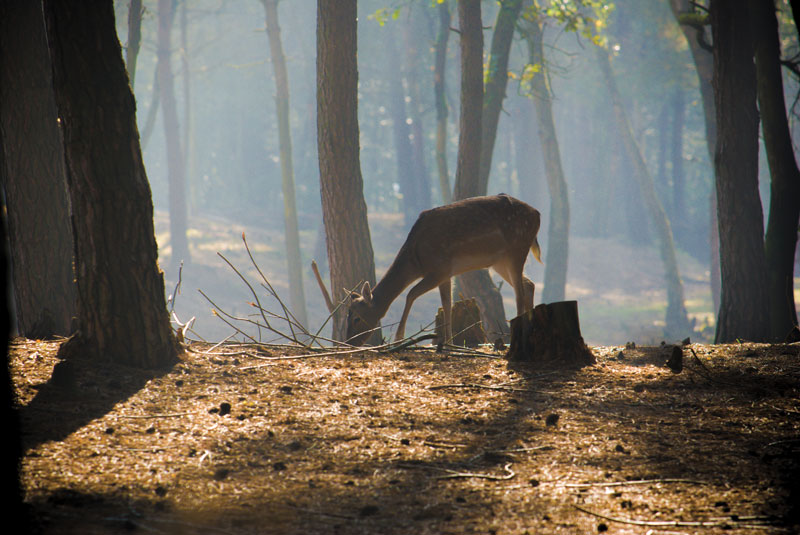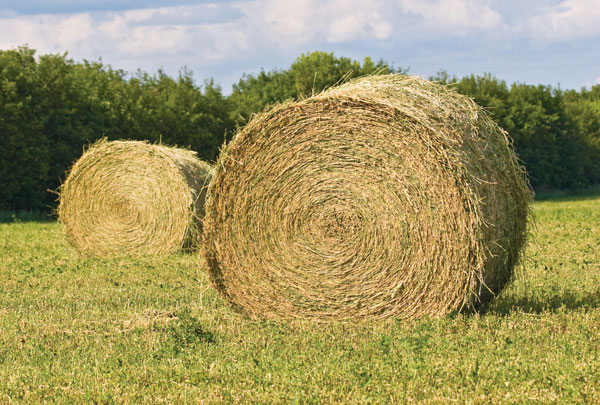Common Traits of Successful Ranchers
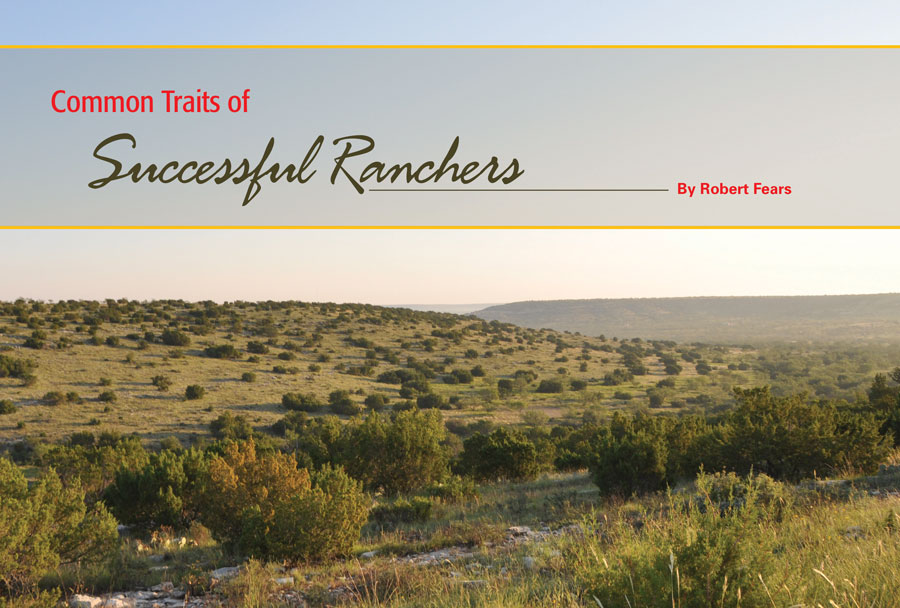
By Robert Fears
Passion is the primary characteristic that makes ranchers successful. They love and care about the land and the wild and domestic animals it supports.
In every region of Texas, there are many ranches that have been owned and operated by the same family through 3 or more generations. The Texas Department of Agriculture Family Land Heritage Program has registered more than 4,000 ranches/farms that have been maintained by the same family for at least 100 years. What enabled these families to retain ownership of land and assets through multi-generations?
Rick Machen, Ph.D., King Ranch® Institute for Ranch Management, described the common traits of successful ranchers during this year’s Cattle Raisers Convention, hosted by Texas and Southwestern Cattle Raisers Association. Most of the information in this article is taken from Machen’s presentation.
“Successful,” in reference to ranchers, is defined as accomplishing a goal or purpose and achieving profit or distinction. Success in ranching is keeping the land and associated resources in some form of production agriculture.
The common traits of successful ranchers were listed in John Nye’s Master of Science thesis at Montana State College in 1939. They are still viable today.
1) Long-range plan of operations for each enterprise.
A long-range plan is a roadmap that shows where the successful rancher wants to take the enterprise. The enterprise plan contains a list of objectives with explanations of how and when they are to be accomplished. It also contains estimated expenses and projected incomes.
2) Ability to obtain high productivity and quality of product and market at advantageous prices.
Cow herd reproductive performance (the cows’ ability to calve every year) has a huge influence on profitability. Successful ranchers strive for productive herds that deliver quality calves sought by buyers. Even though quantity and quality of production is important, the divider between successful and unsuccessful ranching is often the ability to market at top-of-the-market prices.
3) Complete and accurate sets of records and budgets
Successful ranchers keep records on performance measurements including body condition scores, conception rates, weaning weights, forage production, preventive health programs, nutritional programs and expenses. Cattle health records document illnesses, injuries, preventive and therapeutic treatments. Records include details on how cattle nutritional needs are met from native range, improved pasture and/or supplemental feed. Breeding records identify the parents of each calf and details of its performance. Budgets provide limits on spending in relation to expected income.
4) Death loss of livestock held to a minimum
Livestock death loss is minimized through an executed herd health plan developed in consultation with a large animal veterinarian. The plan begins with a focus on biosecurity and includes preventive measures, illness and injury recognition and treatment protocol.
5) Relationship between commodity prices and cost of production management
In its simplest form, profit equals income minus expenses. Ranchers are largely price takers when selling beef. Of the 2 factors involved in the profit equation, producers have much greater control over costs. Successful ranchers use all the procurement and marketing tools available and know with reasonable accuracy their total cost of production. Cattle prices cannot be deemed good or bad in absence of the cost of production.
6) Overall stewardship
The long-term sustainable success of ranchers depends on their passion for and devotion to stewardship. Synonyms for steward in this context are overseer, custodian and caretaker. People who own and/or manage ranches are stewards of the resources entrusted to them. Resources include land, livestock, wildlife, people and finances which are discussed below in more detail.
a) Personal characteristics
Passion is the primary characteristic that makes ranchers successful. They love and care about the land and the wild and domestic animals it supports.
It is a passion for the ranching profession that drives a person to search for lost cattle in inclement weather and rebuild facilities following natural disasters such as hurricanes, floods and wildfires.
A successful rancher is a person of integrity, competent and motivated by a strong work ethic. Since the ranching business is ever-changing, the successful ranchers realize they never know enough and must continually learn, adapt and progress in management abilities.
b) Natural resource stewards
Ranching begins at the soil-water-plant interface and stewards of successful ranches understand the fundamentals.
Soil is a precious, non-replaceable resource that must be protected from erosion by plants that cover and hold it in place. Bare ground is a vulnerability which can compromise success.
Managers cannot control annual precipitation, but stewards work diligently to capture every drop the land receives. Successful ranchers manage their land to maintain a plant cover and soil organic matter which facilitate water infiltration into the soil profile.
Controlling graze/rest periods helps maintain soil/plant resource sustainability. Successful ranchers employ effective grazing management focused on frequency and severity of plant defoliation and uniform utilization of available forages. Seldom are two consecutive growing seasons identical, therefore, grazing management is as much art as it is science.
c) Animal stewards
Successful ranchers match cow size and productivity with available forage, and periods of greatest nutrient demand with times of best forage quantity and quality. They employ moderate stocking rates to sustain soil and forage resources and minimize non-pasture feed costs.
These ranchers keep a close watch on key animal performance measures such as conception rate, calving ease, calves born in the first 30 days of the breeding season, calves weaned per number of cows exposed to a bull, weaning weights, pounds of calf weaned per cow exposed, pounds weaned or pounds of gain on stockers per acres grazed.
Sustainable ranches generally strive for a minimum 90 percent calving percentage, a calving interval of less than 365 days and an annual cow maintenance cost well below calf market value.
Wildlife is an inherent component of the ranch landscape and deserves consideration in the natural resource/ranch management plan. In some regions, wildlife enterprises are a larger and more dependable revenue generator than livestock.
d) Finance stewards
As mentioned previously, beef producers have limited control over the price received for their product. Marketing a value-added calf, retaining ownership beyond weaning, participating in branded beef programs and producing for niche markets can potentially increase revenue compared to selling in a generic market at weaning.
Management efforts beyond weaning incur costs and should be carefully evaluated annually.
Perhaps the greater opportunity for successful cow-calf operations is to manage annual cow maintenance costs.
Among direct costs, the big 3 are typically labor, supplemental feed and depreciation. Moderate stocking rates and selection for easy-keeping, easy-calving females allow successful ranchers to spread labor across a greater number of cows.
Planned grazing minimizes the need for supplemental feed and hay and the associated labor cost.
Depreciation is a function of replacement female value, longevity and mature cow value when they exit the productive herd.
Successful ranchers proceed with caution when considering a purchase that will add to overhead (indirect) costs. Overhead costs are independent of the number of cattle on the ranch and include such items as taxes, insurance, loan payments, utilities, maintenance and licenses.
Money is saved by successful ranchers during the good years to help them through bad times. Like consecutive growing seasons, 2 fiscal years are seldom the same.
7) Customer focus
Continual focus on customers and meeting their expectations are traits of a successful rancher. For the ranch manager, the customer is any of the following or a combination thereof: feeder cattle buyer, stocker cattle buyer, feedyard, packer, hunter, hiker, photographer, or eco-tourist.
8) People
This discussion began with a characterization of the people that manage successful ranches. These people include owners, managers, foremen, cowboys, forage/hay managers and maintenance personnel, who are all essential renewable resources.
Ranches that have remained intact for a century or more have perfected the transition process. Succession planning is an active ongoing responsibility, not just an entry on the to-do list or an afterthought.
“Experience is an irreplaceable instructor,” Machen said. “Successful ranches foster an environment where successful people raise and mentor their successors. Lessons are learned from every mistake, and knowledge and wisdom are transferred by observation and participation. Work ethic is taught by example, and the passion for land, livestock and lifestyle is inscribed in DNA and subsequently cultivated for the next 18+ years.
“Ranchers are not successful by default, rather by the design of people passionate to keep the ranch in the family,” he said.
“Successful Ranchers” is excerpted from the December 2017 issue of The Cattleman magazine. Join today to start your subscription.
